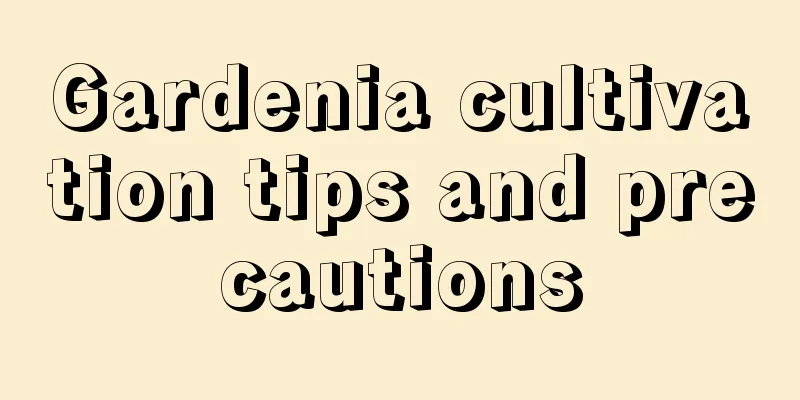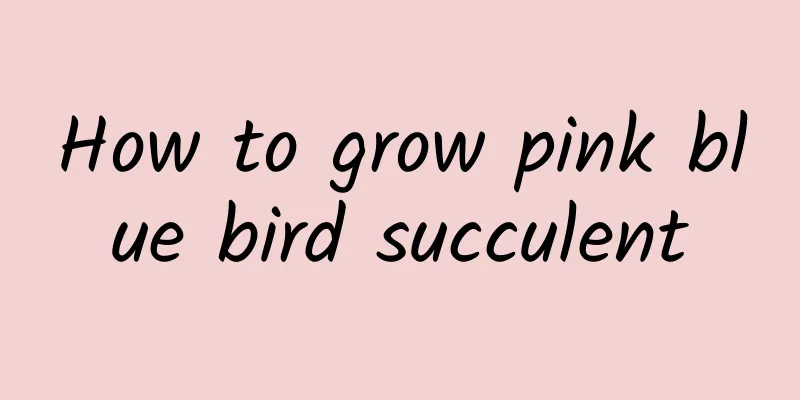Gardenia cultivation tips and precautions

|
Many friends like some flower and plant varieties with strong fragrance, the more common ones are jasmine , gardenia , etc. Gardenia is an ornamental plant that is evergreen all year round with rich fragrance. It is suitable for garden planting or potted planting . The following are some tips and precautions for growing gardenias. 1. Breeding techniques 1. Soil selection Gardenia prefers loose, breathable, well-drained and slightly acidic soil with a pH value between 5-6. You can choose leaf mold, garden soil, and river sand, mix them in a ratio of 3:2:1, and add a small amount of decomposed cake fertilizer as base fertilizer. 2. Lighting management Gardenia likes light, but needs appropriate shade in summer. In spring and autumn, it can be placed in a sunny place, ensuring more than 3 hours of light per day. During the high temperatures in summer, 50% of the light needs to be blocked to prevent the leaves from being burned. 3. Moisture management Gardenia likes moisture, but cannot tolerate waterlogging. When watering, you should follow the principle of "water when the soil is dry and water when the soil is wet", that is, water after the soil surface is dry, and water thoroughly each time. During the high temperatures in summer, you need to water 1-2 times a day and spray water on the leaves frequently to keep them moist. In winter, reduce the frequency of watering and keep the soil dry. 4. Fertilization tips Gardenia likes fertilizer, and fertilization should follow the principle of "small amounts of fertilizer and frequent application". Apply decomposed cake fertilizer water or dilute liquid fertilizer once every 15 days during the growing season. Apply more phosphorus and potassium fertilizers before flowering to promote flower bud differentiation. Stop fertilizing in winter. 5. Pruning management Gardenia is resistant to pruning, and the remaining flowers and dead branches need to be pruned off in time after flowering to reduce nutrient consumption. In early spring, you can prune away dense and old branches to promote the growth of new branches. After pruning, the plant will be more compact and bloom more luxuriantly. 6. Temperature Control The most suitable growth temperature for gardenia is 18℃-22℃. Appropriate cooling is needed during high temperatures in summer, and when the temperature is below 10℃ in winter, the plants need to be moved indoors to keep warm. 2. Precautions 1. Avoid stagnant water Gardenia has an underdeveloped root system, and stagnant water can easily lead to root rot. Therefore, the amount of water should be controlled when watering to avoid the soil being wet for a long time. 2. Prevent and control pests and diseases Gardenia is susceptible to diseases and pests such as chlorosis, leaf spot and scale insects. Chlorosis can be treated by watering with ferrous sulfate to improve soil acidity. Leaf spot disease can be treated by spraying 600 times diluted mancozeb wettable powder . Scale insects can be killed by spraying with special pesticides. 3. Maintain ventilation Gardenia requires a well-ventilated environment, especially in summer and winter, to avoid the breeding of diseases and pests due to lack of ventilation. In summary, everyone should also note that gardenias generally need to be repotted every 2-3 years, with the best time being spring and autumn. When repotting, you can trim the old roots and add new acidic substrate.
|
<<: Clivia cultivation techniques and precautions
>>: Anthurium cultivation techniques and precautions
Recommend
Repotting the Fragrant Vine
1. Time Selection There are not many restrictions...
Where are the bulbs of daffodils?
1. Where is the bulb? The bulb of daffodil is act...
How many days does mustard grow?
During the growth process of mustard, the mustard...
How to prune pine trees? Pruning methods and time
Pine tree pruning time The best time to prune pin...
How to take cuttings of Pennisetum odoratum
Cutting method Material preparation Pogostemon ca...
What is Malantou?
What is Malantou? Amaranthus is a plant of the As...
How to cultivate the cut green radish
1. Soil culture method Prune the cut green radish...
Cultivation methods and precautions of yellow hair palm
Sunlight It is a plant that needs sunlight to gro...
Is ivy a shade or sun-loving plant?
Does ivy prefer shade or sun? Ivy is a shade-lovi...
Do roses like sunshine? Do they prefer sunshine or shade?
Do roses like sunshine? Roses love sunlight and l...
10 popular fruit-bearing plants to bring you good fortune and wealth
Holly After the North American holly leaves fall,...
How to grow crab orchids so they bloom
Crab orchid flowering time Crab orchids usually d...
Why does the jade tree not bloom?
1. Change the soil 1. Reason: Jade plant has cert...
What month is suitable for planting grass beads?
When is the grass bead planted? The official name...
How to grow Euphorbia obesa in winter? Can it be pruned in winter?
1. Keep warm Since the temperature is low in wint...









